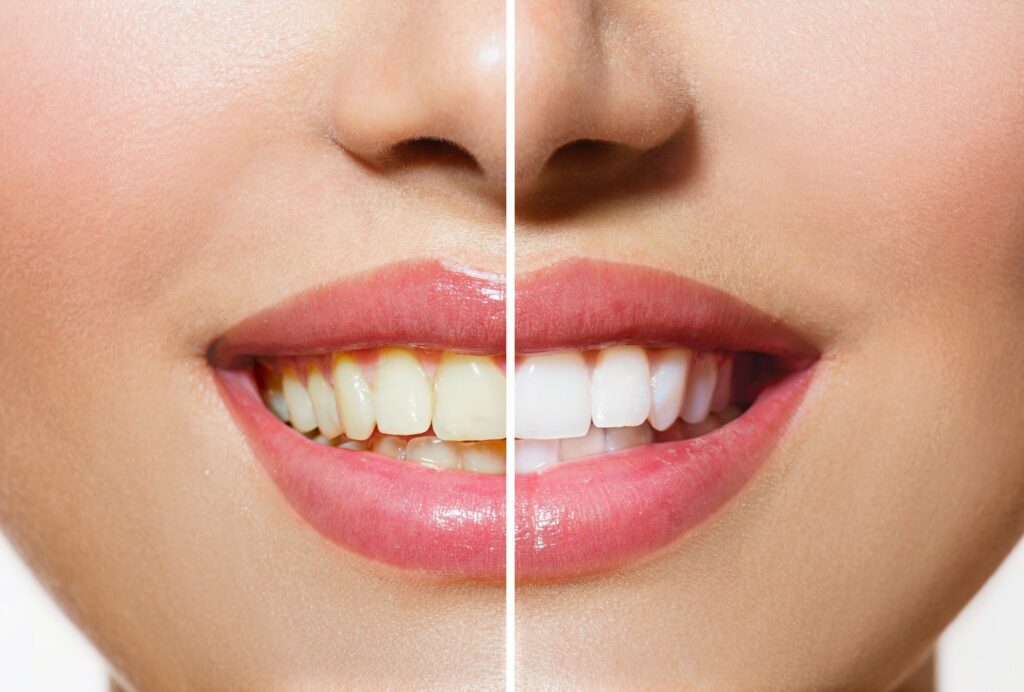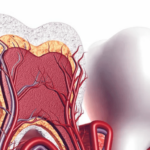
A bright, white smile is often associated with youthfulness, attractiveness, and overall oral health. Over time, factors such as aging, lifestyle habits, and certain foods and beverages can cause teeth to become stained and discolored. Teeth whitening is a popular cosmetic dental procedure that aims to restore the natural whiteness of teeth. In this article, we will delve into the science behind teeth whitening and explore how it works to give you a brighter, more radiant smile.
The Basics of Tooth Discoloration:
To understand teeth whitening, it is important to first grasp the basics of tooth discoloration. The outer layer of our teeth, called enamel, contains tiny pores that can trap and hold particles from food, drinks, and tobacco. Over time, these particles can lead to the discoloration of teeth. Additionally, the underlying layer of the tooth, called dentin, naturally becomes darker as we age. Both extrinsic and intrinsic factors contribute to tooth discoloration.
Extrinsic stains refer to those that occur on the surface of the tooth enamel. Common culprits include coffee, tea, red wine, tobacco, and certain foods with intense color pigments. Intrinsic stains, on the other hand, originate from within the tooth’s structure and may be caused by factors like genetics, trauma, or certain medications. Teeth whitening primarily targets extrinsic stains, although it can also have some effect on certain types of intrinsic stains.
The Science Behind Teeth Whitening:
Teeth whitening procedures work by utilizing various agents that penetrate the enamel and break down the stains, resulting in a lighter appearance. The two main types of teeth whitening methods are:
Bleaching Agents: Bleaching agents, usually containing hydrogen peroxide or carbamide peroxide, are the most common agents used in teeth whitening. These compounds release oxygen molecules that enter the enamel and dentin, breaking down the chemical bonds that hold the stains together. This oxidation process effectively lightens the color of the teeth.
Abrasive Agents: Some whitening toothpaste and over-the-counter whitening products use abrasive agents to remove surface stains. These agents contain mild abrasives that physically scrub the stains off the enamel. However, abrasive methods are generally less effective for deeper and more persistent stains.
Professional Teeth Whitening Procedures:
Professional teeth whitening procedures, performed by a dentist, offer the most effective and controlled approach to achieving significant whitening results. The process typically involves the following steps:
Evaluation and Customization: Before starting the whitening process, your dentist will examine your teeth and oral health to determine if you are a suitable candidate for teeth whitening. They will also discuss your desired level of whitening and address any concerns you may have.
Protection of Soft Tissues: To protect your gums and lips, your dentist will apply a protective gel or rubber shield to the soft tissues surrounding your teeth.
Application of Whitening Agent: The dentist will apply the whitening agent, usually in the form of a gel, directly to your teeth. Depending on the specific product and procedure, a special light or laser may be used to activate the whitening agent and enhance its effectiveness.
Multiple Applications: Professional teeth whitening procedures often involve multiple applications of the whitening agent. Each application is usually left on the teeth for a specified period, after which it is rinsed off or suctioned away.
Post-Whitening Care: Once the desired level of whitening is achieved, your dentist may provide post-whitening care instructions, such as avoiding certain foods or beverages that can cause staining and maintaining good oral hygiene practices.
Safety and Effectiveness of Teeth Whitening:
Teeth whitening procedures performed by dental professionals are generally safe and effective when carried out according to professional guidelines. However, it is essential to follow your dentist’s instructions carefully and avoid overusing or misusing whitening products. Excessive or improper use can lead to tooth sensitivity, gum irritation, or other adverse effects.
It is important to note that teeth whitening results are not permanent. The longevity of the whitening effect depends on various factors, including your oral hygiene practices, dietary habits, and lifestyle choices. Touch-up treatments or maintenance whitening may be recommended to sustain the desired level of whiteness.
Summary:
Teeth whitening is a science-backed procedure that can effectively reduce and eliminate stains, giving you a brighter, more confident smile.
Understanding the science behind teeth whitening helps us appreciate how it effectively removes stains and restores the natural whiteness of your teeth. Professional teeth whitening procedures performed at Dentaverse, a leading aesthetic clinic, offer the safest and most effective approach to teeth whitening. With the guidance of experienced dental professionals, you can expect a customized treatment plan tailored to your specific needs and desired level of whitening.
It is important to note that teeth whitening is not a permanent solution, and maintaining good oral hygiene practices and lifestyle choices are crucial for long-lasting results. Regular visits to Dentaverse for check-ups and touch-up treatments, if needed, can help you maintain your beautiful, white smile over time.




